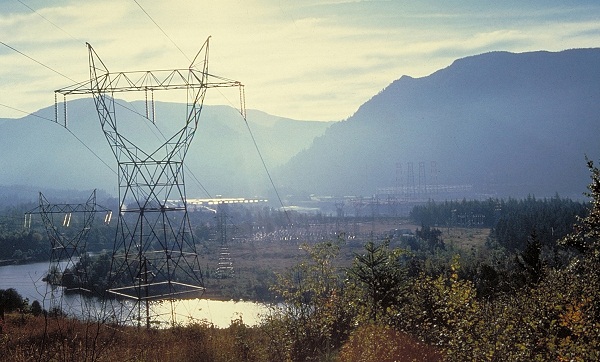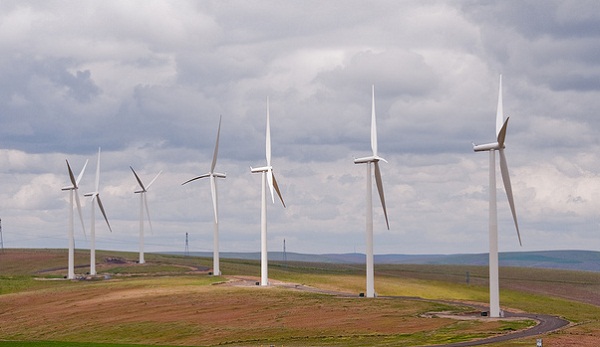Wind power has not always had an easy time making it onto a Pacific Northwest grid dominated by hydropower. But late in the afternoon on March 11, the turbines, mostly clustered near that wind tunnel called the Columbia River Gorge, spun fast and furious and grid operators found room for a record 4,039 megawatts (MW).
How much is 4,039 MW? More than double the energy that the coal, gas and nuclear plants connected to the Bonneville Power Administration system were providing at the time, BPA said.

For BPA, which owns and operates three-quarters of the Northwest’s high voltage transmission, the news offered the welcome opportunity to show itself as wind-friendly after months of conflict with wind producers over access to the grid.
In addition to controlling most of the transmission in the region, BPA sells power from dozens of federal hydro projects in the Northwest, and it has faced claims of favoring its own power sources over wind. Last December, federal regulators said BPA acted unfairly in shutting off wind power in spring 2011 when a big snowmelt gave it more electricity than the agency said it needed.
BPA’s action then was opposed by wind generators, led by Portland, Ore.-based Iberdrola Renewables, many of whom lost federal production tax credits and state renewable energy certificates when their turbines were shut down and who worried that BPA’s policy could set a precedent that would stifle future support for the industry in the region.
BPA last month proposed new measures—including splitting the cost for lost revenue—to mollify the wind producers when their power loses out to hydro.
None of that came up in the federal agency’s announcement of the wind power record. Instead, BPA cited a number of measures it had taken to speed the integration of wind onto the grid, including:
- Completing a 79-mile 500-kilovolt power line, with a second high-voltage line under way that would allow for another 3,000 MW of service to wind power plants.
- Opening a substation in southeast Washington that gives the 343-MW Lower Snake River Wind Project (pictured below) access to the grid.
- Developing “a state of the art wind speed and wind generation forecasting system that forecasts up to three days in advance as opposed to the previous system that provided information only one hour ahead.”
- And expanding a pilot program that allows for intra-hour scheduling, in which generators can adjust their transmission use every 30 minutes to take advantage of changing wind speeds. Previously, generators were able to change their transmission schedules no more than once an hour.
BPA forecast that it will have 5,000 MW of wind connected to its system by next year, “several years ahead of earlier estimates,” it said.
“We continue to collaborate with wind developers and others to interconnect and integrate wind,” Brian Silverstein, senior vice president for BPA Transmission Services, said in a statement. “This represents BPA’s commitment to reliably and cost-effectively connect and balance a variable energy resource—one of the great engineering challenges of the 21st century.
